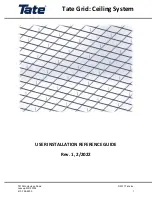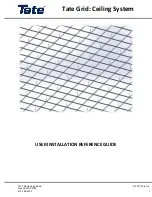
Operating the Instrument
R&S
®
RTM2000
43
Getting Started 1317.4710.02 ─ 05
1 = Time base (horizontal scale)
2 = Trigger offset (horizontal position)
3 = Trigger mode
4 = Trigger settings: Trigger source, trigger type settings (for Edge trigger: level, slope, coupling, filter)
5 = Sample rate
6 = Acquisition mode. For high resolution and average modes, the resulting resolution is indicated in the
upper right corner of the window, see
7 = Acquisition state
Zoom and FFT windows have their specific information bars which are described in the
correspondent chapters in the "User Manual".
Waveform labels
The labels for channel, math and reference waveforms show the vertical scale value
and the coupling. The label of the selected waveform is highlighted with the waveform
color.
Windows
The main window shows one or more waveforms: channel waveforms, reference and
math waveforms. The grid marks the vertical und horizontal divisions. If zoom, FFT or
XY-view is selected, the display shows two or more windows. The zoom, FFT or XY-
trace appear in the large main window. The basic waveforms are shown in smaller win-
dows for overview.
Results table
Results of automatic and cursor measurements are shown in the results table. Results
of configured measurements appear in the two left columns. Cursor and Quick Meas
results are shown in the three columns on the right.
Menu
Shows the current functions of the softkeys.
Trigger position
The trigger position marker and the trigger level marker have the color of the trigger
source waveform.
5.2 Working with Waveforms
The R&S
RTM can acquire, create and display several waveform types:
●
Channel waveforms from input signals
●
Reference waveforms:
Four reference waveforms can be used as references for comparison and analysis.
Working with Waveforms













































